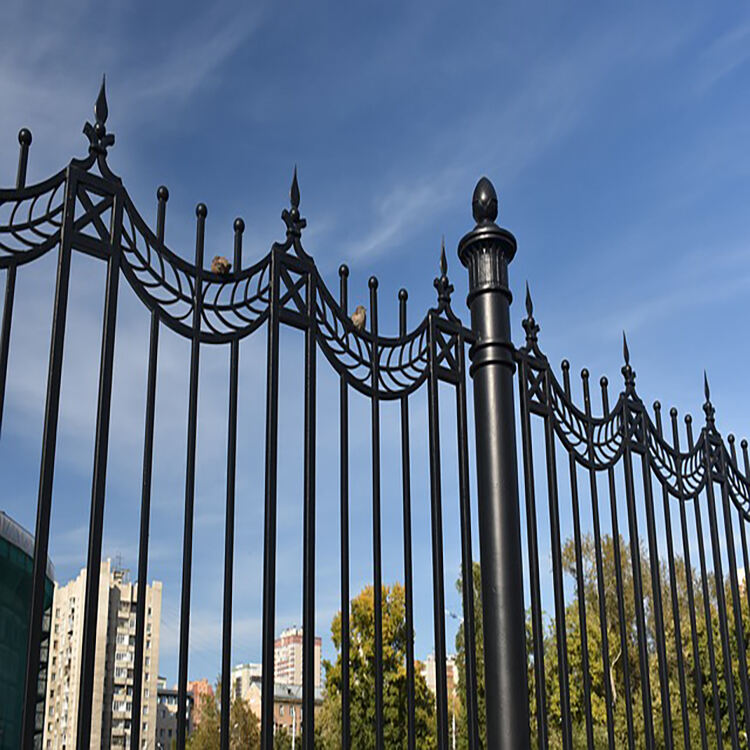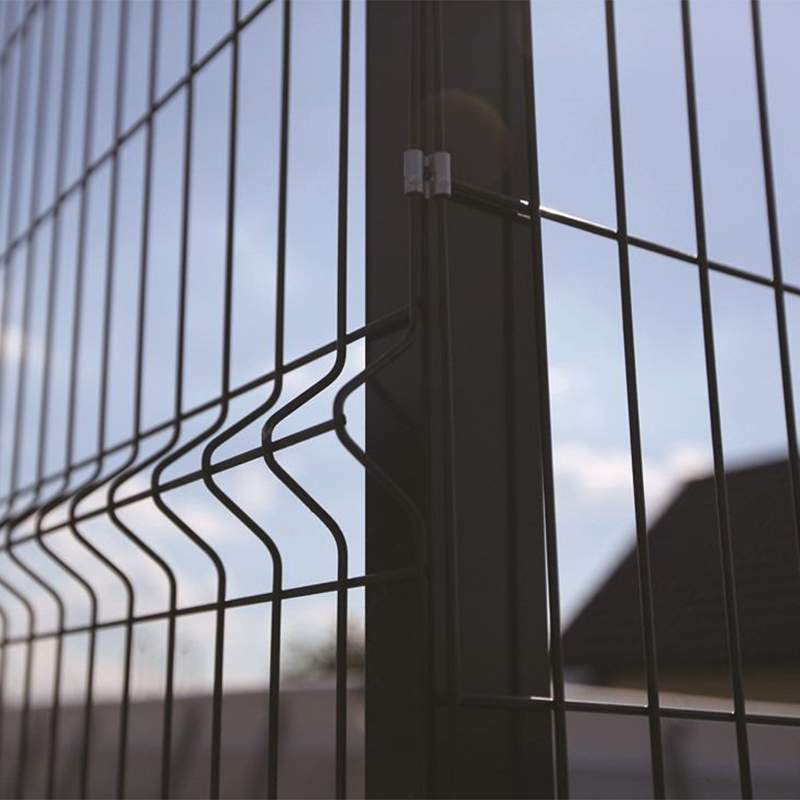Key Benefits of Temporary Fencing for Construction Sites
Enhanced Security with Temporary Fence Panels
Fence panels for temporary use are really important when it comes to keeping construction sites secure. They basically serve as a warning sign to anyone thinking about sneaking onto the site or trying to steal equipment. Most modern panels come with locks these days, and many contractors actually install them alongside security cameras around the perimeter. According to industry reports, sites that properly set up temporary fencing see about 40% fewer incidents of stolen tools and damaged materials compared to those without proper barriers. Beyond protecting expensive gear, good fencing makes life easier for workers too since they don't have to worry about random people wandering into dangerous zones during operations.
Improved Safety Compliance for Hazard Mitigation
Putting up temporary fencing around construction sites helps keep everyone safe by keeping dangerous areas separate from where people normally walk. When we separate these risky spots from public spaces, it stops accidents before they happen, which meets all those safety rules set out by organizations such as OSHA. Following these safety guidelines shows that companies really care about worker welfare and pedestrian safety near their projects. And there's another angle too: good temporary fencing actually works wonders for business finances. Contractors often find their insurance costs go down when they properly secure their sites, plus they avoid costly lawsuits if someone gets hurt because of poor site management. So it's not just about following the law anymore it's becoming smart business practice as well.
Flexible Installation for Changing Site Needs
Temporary construction fences offer real flexibility when dealing with the ever-changing needs of building sites. Contractors can set them up fast, take them down just as quick, or move them around whenever needed. This cuts down on delays and saves money on labor costs too. When site plans need adjusting, these fences let workers make changes on the fly without tearing things apart and rebuilding from scratch. Most construction firms find their workflow gets smoother over time because they can adjust fencing as work progresses. Projects tend to stay on schedule better, which means jobs get finished faster and clients generally end up happier with the results.
Types of Temporary Construction Fencing Solutions
Modular Temporary Fence Panels for Rapid Deployment
For construction sites that need something put up fast and changed just as quickly, modular temporary fence panels work really well. The panels themselves snap together without much fuss, so crews can rearrange fences whenever the job site changes direction. Contractors love how these panels come in different heights and shapes too. Some sites need tall barriers near roads while others require shorter ones around equipment areas. Using these modular systems actually saves time on projects because there's no waiting for custom installations. Labor costs drop when workers aren't spending hours dismantling old fences and building new ones from scratch every time plans shift. On big construction jobs where things change daily, this kind of flexibility makes all the difference between keeping on schedule and facing costly delays.
Temporary Chain Link Fence Durability
Chain link fences have become pretty standard around construction zones because they hold up so well over time. Made with heavy gauge wire and coated steel components, these fences stand up to rain, snow, and even accidental impacts from equipment. Most contractors report getting at least three to five years out of good quality chain link before needing major fixes. On job sites where materials need securing, these fences create an effective barrier that keeps curious hands away from tools and equipment. We've seen countless instances where properly installed chain link prevented theft losses that could run into thousands of dollars during a project.
Crowd Control Barriers for High-Traffic Areas
Crowd control barriers make all the difference when it comes to keeping people moving safely around construction sites, particularly where foot traffic is heavy. They create defined paths that stop folks from wandering into active work zones while making the whole site look more organized. Most modern systems come with simple locks that let workers set up temporary boundaries quickly. This segregation keeps pedestrians safe and makes sure everyone follows local safety rules. Construction managers who invest in good crowd control solutions tend to see better safety records on their projects. The barriers reduce accidents caused by too many people walking through dangerous areas and generally keep things running smoother day to day.
Cost-Effective Installation and Maintenance Strategies
Minimizing Labor Costs with Pre-Assembled Systems
Fencing systems that come pre-assembled present a smart way to cut down on labor expenses when putting them in place. Built for fast assembly, these kits need far less manpower than traditional methods, so crews can focus on other pressing jobs around the site. When a company installs fences quickly, it cuts into project delays and lets workers tackle more important aspects of whatever construction is happening. Some businesses report saving around 20 percent on labor bills by going this route, making these ready-made options worth considering for anyone looking to keep installation costs under control without sacrificing quality.
Reducing Long-Term Expenses Through Reusability
Temporary fencing that can be reused multiple times ends up saving money in the long run. When companies go for good quality materials instead of cheap alternatives, they get fencing that lasts longer without needing constant replacement, which adds up to real cash savings down the road. Some studies show that businesses which focus on getting fencing they can reuse again and again might actually cut their spending by around 30 percent or so. Beyond just saving money on the bottom line, this kind of thinking helps the environment too. Construction sites generate a lot of waste, but when equipment gets used multiple times before being discarded, it makes a noticeable difference in reducing overall environmental impact.
Rental vs. Purchase: Evaluating Budget Options
When it comes to choosing between renting or buying temporary fencing, businesses need to think about what makes sense for their bottom line based on specific project requirements. The decision really hinges on how long the job will last and how many times the fencing will actually be needed. For shorter jobs that only need barriers for a few weeks, renting tends to save money most of the time. But if a company knows they'll need the same fencing setup multiple times over several months or even years, investing in their own equipment might pay off better in the long run. Looking at what other contractors have done with similar projects gives real world data points that help figure out which path offers better value. Many construction firms find that reviewing these real life scenarios helps them avoid costly mistakes when planning their next big job site.
Meeting OSHA Standards for Construction Site Safety
Following OSHA rules isn't just good practice it's basically required if we want to keep construction sites safe. The regulations specifically mention temporary fencing needs to serve as barriers and markers around restricted zones so nobody gets hurt walking into dangerous areas. Sites that ignore these requirements end up with all sorts of problems from actual injuries to hefty fines that eat into profits. Looking at industry data shows something pretty clear too sites that follow OSHA guidelines tend to have about half as many accidents compared to non compliant ones. That's why most contractors now install temporary chain link fences whenever possible they know it helps them stay on the right side of the law while keeping everyone from getting injured on the job site.
ADA Accessibility Considerations Near Work Zones
Making sure construction areas are accessible according to ADA standards isn't just something companies have to do by law, it's really important for everyone to feel included when moving around these spaces. Temporary fences around building sites need to leave room for wheelchair users and others who might struggle with regular paths. Getting this right covers both what the law demands and shows that a business cares about doing the right thing beyond just checking boxes. Companies that skip over ADA rules often find themselves facing lawsuits later on plus damage to their reputation in the community. When contractors install fencing that follows accessibility guidelines from day one, they save themselves headaches down the road while demonstrating genuine concern for equal access across neighborhoods.
Local Permit Requirements for Temporary Barriers
Following local permit rules matters a lot when setting up temporary barriers at construction sites. Different cities have their own regulations, so contractors need to actually check what applies where they're working to stay out of trouble with the law. Take temporary fences around construction zones for example these often require permits depending on how big the area is and exactly where it's located in town. Smart companies save themselves headaches later on by getting all the proper paperwork sorted before starting work. Getting those permits upfront helps keep everything running smoothly without unexpected roadblocks slowing down progress on site.
Table of Contents
- Key Benefits of Temporary Fencing for Construction Sites
- Types of Temporary Construction Fencing Solutions
- Cost-Effective Installation and Maintenance Strategies
- Meeting OSHA Standards for Construction Site Safety
- ADA Accessibility Considerations Near Work Zones
- Local Permit Requirements for Temporary Barriers



